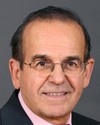Thank you, Mr. Chairman.
Mr. Chairman, members of the committee, good afternoon.
My name is Andrea Nappi, and I’m here today to represent the supervisory board of the Eurofighter GmbH consortium, whose headquarters are based in Munich, Germany.
The shareholders of the consortium are Alenia Aeronautica, BAE Systems, EADS Germany, and EADS Spain.
I’m joined today by my colleague Mr. Chris Worning of EADS Germany, who is one of our test pilots and who has flown many types of combat aircraft, and by Mr. Roman Kohler, who is Eurofighter's vice-president for government affairs.
I will begin by saying how grateful Eurofighter is for this opportunity to address the committee and to answer your questions about our Typhoon aircraft and about our interest in meeting the needs of the Canadian defence force. We have followed closely and with great interest the progress of the committee's current inquiry, not least so that we would be well prepared to provide you with the most helpful responses.
Although I recognize that the committee is generally familiar with these matters, I would briefly remind you that the Eurofighter so-called core nations are Germany, Italy, Spain, and the United Kingdom, and that these four countries have ordered 620 aircraft, of which 250 have been delivered to date. In addition, Austria has purchased and taken delivery of 15 aircraft, while Saudi Arabia has purchased 72 aircraft. There are now 16 operational Eurofighter Typhoon units operating in all climatic environments, including northern Europe, the Middle East, and the south Atlantic.
The Eurofighter Typhoon is currently a contender in competitive opportunities around the globe for a total of some 800 fast jet aircraft, and has performed outstandingly well in recent highly demanding evaluation trials. So this is a very real airplane, undertaking very real and demanding operational duties.
The Eurofighter Typhoon aircraft, which first entered operational service in 2004, has flown some 100,000 hours and will form the backbone of the Eurofighter nations' forces for at least the next 30 years. Eurofighter Typhoon is a modern, highly capable, highly agile multi-role twin-engine fighter, with a proven level of maturity and extensive growth potential. Unlike other fighters, Eurofighter Typhoon's advanced design features allow a comprehensive air-to-surface capability to be provided with no compromise to air-to-air effectiveness. The four partner nations are committed to an ongoing cycle of capability sustainment to maintain the aircraft's fighting edge throughout its operational life.
The aircraft makes extensive use of composites in the airframe, with only 15% of the surface comprising metal. Its EJ200 engines, combined with the aircraft's aerodynamics, allow it to cruise supersonically without the use of reheat for extended periods of time, even with a weapons load. A fully integrated avionics system, coupled with a lightweight helmet-mounted display, help to minimize the pilot’s workload and maximize situational awareness, permitting fully effective single-seat operations in all weather conditions, day and night.
An integrated suite of advanced sensors provides for the detection, tracking, identification, and engagement of air and surface targets under even the most demanding conditions, and the aircraft is able to carry a wide range of weapons, mission-specific loads, and other stores.
The Eurofighter Typhoon has also been designed to be reliable and easy to maintain when operating from forward operating bases with limited facilities, and this gives extremely high levels of fleet availability and competitive life-cycle costs. You may not be surprised to hear, therefore, that we pay little attention to the fourth-generation versus fifth-generation debate that seems to have become fashionable. We prefer instead to focus on delivering a mix of capabilities that not only meets our customers' requirements but also optimizes their chances of surviving the battle. This mix includes, for example, our super-cruise capability, extreme agility, sustained supersonic and high-altitude operations, fighter performance with a full missile load, integrated sensor fusion, network-enabled operations, low observability, and an ability to change roles in flight.
It is also worth underlining at this point that the Eurofighter Typhoon was designed from the outset to be fully interoperable at all times and in all circumstances with NATO forces. It would be more than able, therefore, to undertake NORAD operations in concert with U.S. forces. I would also observe that its twin-engine design makes it particularly suited to operating safely in Arctic conditions.
Perhaps I could also point out that the Eurofighter Typhoon meets all three of the key capabilities highlighted by General Deschamps as essential for the next-generation fighter--interoperability, sensors and data fusion, and survivability.
The Canadian defence force was first briefed on the Eurofighter Typhoon in 2004 by BAE Systems. Further intermittent contact with BAE Systems took place until 2008, during which time visits were also made to the Royal Air Force Eurofighter Typhoon operational base. During this period we and the U.K. Ministry of Defence provided limited amounts of data on the aircraft, and I have provided the clerk of the committee with French and English-language versions of summary documents that we previously provided to the Canadian defence force.
As I said, we are continually developing and optimizing the aircraft, so I respectfully suggest that a current assessment of the aircraft would require far more up-to-date and comprehensive data than has been previously provided. We would, of course, be delighted to offer such data, which would also be of much higher classification than the earlier data. The bottom line is that we are wholly confident that our aircraft would readily meet the high-level mandatory capabilities for Canada's next-generation fighter.
Aside from its wish to secure a cost-effective, leading-edge capability, we have been especially aware of Canada's determination to maximize the benefit of any acquisition for Canadian industry. I would like to highlight, therefore, that as a multinational collaborative venture we are used to sharing intellectual property and transferring technology, not just among ourselves, but with our extensive supplier base and our export customers.
In addition, all four Eurofighter partner companies have outstanding track records in meeting industrial participation and offset obligations around the globe. Between us we have the ability to offer Canadian industry an unprecedented and unique level of access to key fighter technologies covering manufacturing, maintenance, repair and overhaul, capability development, and systems integration.
We can also offer opportunities and partnerships not just on the Typhoon aircraft, but on high-technology projects in every sector of the defence equipment arena, as well as in a wide variety of civil aerospace, communications, electronics, and space programs.
Eurofighter's shareholder companies have combined turnover in excess of 120 billion euros, and operate some 20 business units in more than 30 countries. The Eurofighter consortium is happy to work with Industry Canada and the regional benefit agencies to develop a bespoke, high-value industrial participation offering to Canada, meeting or exceeding the dollar-for-dollar requirement.
On the vital issue of sovereign control, Canada is a close and longstanding ally of all four Eurofighter partner nations, and the history of the defence trade between us demonstrates well our willingness to transfer the technology needed to ensure that Canada remains in charge of its own destiny.
I look forward to being able to answer the committee's questions, but before doing so I would like to offer you an invitation to visit Eurofighter's facilities in Europe and an operational Typhoon base, in order to gain a true appreciation of this world-class multi-role combat aircraft that matches so well the operational challenges faced by the Canadian defence force.
Merci beaucoup.



